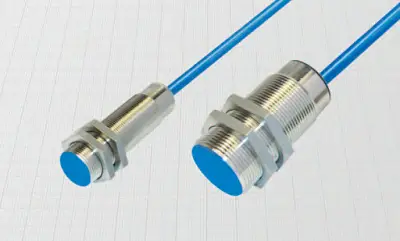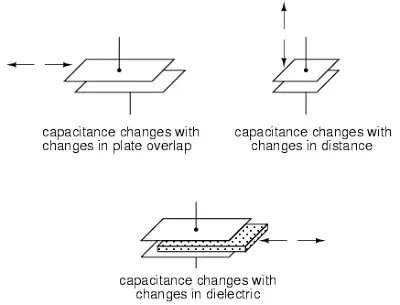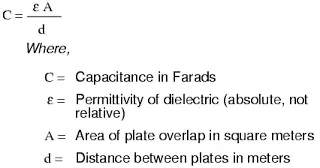 |
| Fig. Capacitive transducers (source: directindustry.com) |
Capacitive Transducers
Contents
show
The capacitive transducer is the capacitor with variable capacitance. The capacitive transducer consists of two parallel metal plates that are separated by the dielectric material such as air. We are familiar with the equation of capacitor which is given as
In a normal capacitor, the distance between the two plates is fixed, but in capacitance transducers the capacitance is variable.
The capacitive transducers work on the principle of change of capacitance. The capacitance of the capacitor can be changed by
1. change in overlapping area
2. change in dielectric constant
3. change in the distance between the capacitor plates
 |
| (source: ecoursesonline.iasri.res.in) |
The above changes can be caused by the physical variable like force, pressure, displacement, etc. that is to be measured. This change in capacitance can be easily measured and it is calibrated against the input quantity. Thus with this, the value of the input quantity can be measured directly. The capacitance may be measured with bridge circuits.
The capacitor transducers are used for the measurement of linear and angular displacement. This uses the concept of change of capacitance by a change in overlapping area and distance between the capacitor plates. For the measurement of object displacement, one plate of the capacitance transducer is kept fixed, while the other plate is connected to the object. When there is any movement in the object, the plate of the capacitance transducer moves. This will result in change in the distance between the two plates. Hence, there is a change in the capacitance. The capacitance can be calibrated against the measured displacement.
Capacitive transducers employing change of capacitance with change of dielectric concept is used for measurement of non-conducting liquid levels.
Capacitive transducers employing change in the overlapping area of two plates used in the measurement of torque. This principle is used in the torquemeter.
Advantages of Capacitor Transducers
1. It produces an accurate frequency response to both static and dynamic measurements.
2. Require small forces to operate them
3. Loading effects are minimum because of high input impedance.
4. Extremely sensitive device
5. They require small power to operate.
6. It is useful in applications where stray magnetic fields affects the inductive transducers.
Disadvantages of Capacitor Transducers
1. Stray capacitance may arise. So metallic parts of transducers must be insulated from each other.
2. An increase or decrease in temperature to a high level will change the accuracy of the device.
3. The leads connecting the transducer cause errors or distortion in signals.
Excercise
Q. Explain how by using a differential arrangement in a capacitive transducer, the response can be made linear.
Q. Explain the different principles of working of capacitive transducers.


It’s an very interesting study material for exams to prepare in hurry
THANK YOU
I am grateful for this sir/ madam.
Please post more things
nice easy for last minute….:)